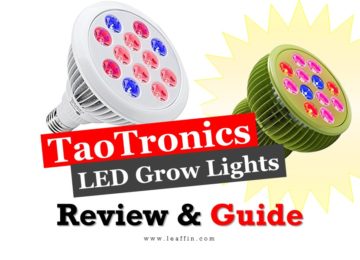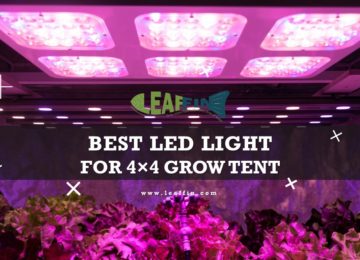More pros and fewer cons make Leca clay pebbles/Hydroton a popular grow medium. Also known as LECA clay pebbles, Hydroton is regarded as a standard growing medium for Aquaponics, Hydroponics, and Aeroponics. We’ll learn about this medium in detail, from Introduction to pros/cons and do’s/don’ts in this post.
Table of Contents
What is Leca Clay?
LECA is short of “light expanded clay aggregate” is a processed ceramic lightweight aggregate composed of small pebbles of the size of peanuts. Also known as Hydrotron, LECA is widely used in hydroponics using media bed or Dutch bucket techniques because of its lightweight and other favorable features. Clay pebbles are very popular among aquaponic farmer too.
How is it made?
Leca/Hydroton is made by heating certain clays to a high temperature of almost 1200°C in a rotary kiln. This process expands the volume of material by 4-5 times creating ceramic pellets having a cellular inner structure. It is Green, Anti-shrinkage, Internal curing, Lightweight, Sound, and Thermal Insulation and Fireproofing.
Hydroton Specifications:
- Crushing Strength =3,1 n/mm²
- Density= 403 kg/m³
- Size: 8-12 mm
Uses of Expanded Leca Clay Pebbles
- They are widely used as a growing medium in the hydroponic/Aquaponics system because of neutral pH and excellent capillary action qualities. Ideal for ebb & flow systems, this medium provides many benefits in comparison with soil. This clean and odor-free medium is reusable and provides excellent aeration.
- Leca is also mixed with Coco Medium and Soil to grow plants in Pot Culture. This is used anywhere where extra drainage is required. Also used in drainage layers in flower pots, roof gardens, for trees in an urban setting and sports grounds.
- This highly porous growing medium is also used for Substratum cultivation in professional horticulture and the cultivation of decorative plants. The plant baskets and container gardens are filled with hydroton to provide support for plants’ roots.
- Use clay pebbles as Seed starter: You can cover the seed with a couple of crushed pebbles in small net pots. The crushing increases saturation. Set the misters to water for 4-10 seconds after every 2-3 hours to set out the germination. Keeping the pebbles moist is important, just don’t let them dry out.
Hydroton prevents root rotting, acidity, and pests.
How to Use Clay Pebbles: Do’s & Don’t

The clay pebbles are the most favorable medium for flood & drain systems. We have listed some do’s and dont’s to consider while working with them. When using for hydroculture (Aquaponics/ Hydroponics/ Aeroponics):
- Rinse new hydroton once with clean lukewarm water before using as there can be dust that may cause clogging issues in drippers or mesh filters.
- Sometimes clay pebbles float! Nothing to worry here! especially newly bought ones. It is normal and you can soak the pebbles for at least 6 – 24 hours. You can hold them down by putting something heavy on top.
- Remove the dirt as much as possible from the roots of the plant.
- Spread a 3-4 cm thick layer of hydroton in the plants’ container.
- Put the plants in the container and fill it with pebbles until a water margin of 2cm is left. Move the plant gently up and down to spread clay all around the roots while While topping up.
- Try to keep an inch (or as much as possible) of dry balls on the top to protect the system from fungus and algae growth.
- During the first week only apply water. Subsequently, add hydro-fertilizer.
Other Tips
- Rinse, soak, or sterilize with isopropyl alcohol or peroxide before reusing the pebbles.
- Never let your pebbles dry out.
- You can use pebbles in conjunction with soil but not as a substitute for soil outdoors.
Pros of Hydroton
- Good colonization for microbial populations
With a good ratio of biological surface area and air space, clay pellets provide a favorable condition for bacteria and microbes to colonize. Although the lava rock is even better and cheaper, it is not preferred over pebbles because it is hard on the hands with its sharper edges. - High pore space leading to fewer blockages
Hydroton like other large aggregates has much larger space between pebbles than small particles like perlite and sand. Larger pore spaces mean better percolation (flow of water through the media). The clogging issue doesn’t usually occur in hydroton and water drains very effectively. These features make it an ideal choice for ebb & flow systems and aquaponic systems. - Recyclable & environment-friendly:
You can just rinse and reuse the pebbles many times as you need. They can last a long time but if they lose their usefulness, you can put them to your outdoor gardens to increase aeration and organic content. Hydroton is doesn’t have any harmful effect on the environment. - Air-holding capacity to keep root zones oxygenated:
The pores in the pebbles, the space between them, and their superior drainage function keeps air circulating so roots get plenty of oxygen. They do have some capacity to hold air bubbles but not as good as perlite’s air-holding capacity (AHC). Combined with the great percolation, Hydroton’s AHC keeps the media well aerated and prevents problematic anaerobic zones to occur. - pH neutral and inhospitable to bugs:
In Aquaponics, you want to keep pH always between 5.6-6.3. Any pH imbalance will lead to deprivation of plant from certain essential nutrients, the stress in fish and bacteria. The hydroton is pH neutral, unlike some other hydroponic media that are either acid or alkaline.
- Easy to plant and harvest:
It’s easy to transplant and pull plants out of loose hydroton media. It will save you a lot of time while separating root from the media surrounding them. - Inexpensive (on Small Scale):
They’re inexpensive and can save you money as you can reuse them over the years.
Cons of Hydroton
Since these can be somewhat pricey, it seemed fair to let everyone know of any possible Pros.
- Fairly costly on large scale:
Hydroton is the first choice of small scale growers because it is extremely easy to work with. But, it’s a bit expensive to use on a large scale. However, there are some free alternatives to grow media with some downsides. - Not suitable for cold outdoor climates:
According to an observation, they’re not suitable for cold outdoor climates. The frozen water in the tiny channels and pockets creates larger fractures within the clay pellet. In cold environments, their crushing strength decreases over time to the extent that you can crush these with very little pressure of a thumb and finger. - Can be problematic with pumps and plumbing:
The new pebbles that float for the first few months can cause blockages by getting sucked into filters or drain lines. You also need to rinse and soak them properly before use to prevent dust from the clay pebbles getting into the mechanics of your systems and cause problems. - Poor Water holding capacity:
Their excellent drainage makes them quick to dry out. With poor water holding capacity, Clay pebbles don’t stay moist after being drained that can lead to crops getting dried and wilted if not watered frequently. This is not an issue in cooler climates, with drought-tolerant crops, and with constant flooding. That’s why it is mostly used in the ebb & flow systems.
Alternatives & Comparison
Hydrocorn vs Hydroton
Comparatively, Hydrocorn is smaller, irregular in shape, and tends to settle into a more compact substrate. Hydroton is pH neutral. Whereas, Hydrocorn comes with an initial pH of anywhere in the range of 8 – 10. You need to soak with an acid solution for 4-5 days to lower the pH.
Hydroton vs Rockwool
Rockwool has more water retention capability and is considered great for seed starting. Unlike Hydroton, Rockwool is not pH neutral. They come with a high pH and need to be soaked in water before using. They are also not considered eco-friendly. Rockwool is also not recommended to use in aquaponics as it can cause irritation to fish or they can consume the fiberglass.
Hydroton vs Perlite
Perlite is relatively inexpensive and lighter in weight as compared to Hydroton. Perlite is not recommended for an ebb and flow system as it will wash away too easily during flooding. both are made to hold water and have a certain amount of water wicking ability. Although perlite has more cracks and crevices, Hydroton stays moist longer because of its higher absorption ability.
Buying Tips: Where & How to Buy
You should be able to get the clay pebbles at a gardening center, garden shop, places where you can buy large shrubs, bushes, and even tree’s.
Check Before buying: It can be any kind of rock really, just do a vinegar test. if you put a handful of the rock in a glass of vinegar and they bubble, then it has too much limestone and you shouldn’t buy it.
Online Resources
GROW!T Clay Pebbles are available on Amazon in 10, 25, 40-liter bags. They are less likely to break and cause system issues. They are pre-washed.
Leca Clay Grow Media has uniform pebbles in a 2 lbs bag with mostly five-star reviews.
Check more growing medium alternatives with their ups and downs here.
Have any question? Feel free to ask in the comments. You can share your own experiences using these little red pebbles, that may add value to information and knowledge of others. & if you have any friends who want to know more, please share this article with them. Thanks for reading!





Hello! Do you think that the size of the clay pebbles matters for growing plants? I’ve seen some that are labeled as “giant”. They’re advertised as 15-25mm. I’ve seen others labelled as 8-16mm.
Thanks,
James
Hi James,
Thank you for your comment. Yes, size of clay pebbles does matter.!
Small particles have more Biological Surface Area and Nutrient holding capacity, easier to Plant and move. However, its cons are Compaction Solid accumulation
While large pebbles have higher void space (Large pores), better percolation, are easy to clean but have Lower Biological Surface Area.
Check this article for more information
https://www.leaffin.com/what-choose-growing-media-hydroponics-aquaponics/
Thanks
Maisie
Oh my gosh. Thank you SO much! That article was so helpful!
–James!
These are great when conditioning clay and blending colors together.
But even if you have a five year old or even a five year old mentality,
it is possible to dive head first into this project and
work quickly and things will still come out well.
In order to cover 100 sq ft, with a depth of 6
inches, you will want approximately 2 cubic yards of organic matter.